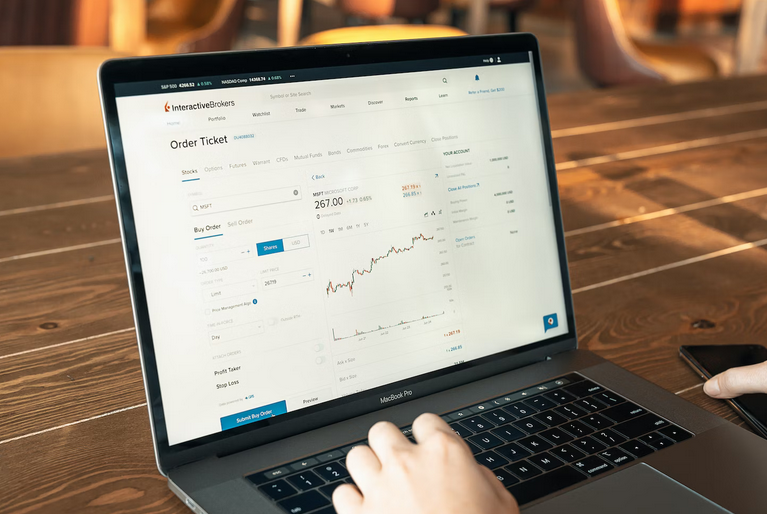How to Conduct a Break-Even Analysis for Your Business
When starting or running a business, understanding your financial health is crucial. One essential tool for this is the break-even analysis. It helps you determine when your business can cover all its expenses and start making a profit. In this guide, we’ll walk you through the process of conducting a break-even analysis in a friendly and informative tone.
What Is a Break-Even Analysis?

A break-even analysis is a financial calculation that helps determine the point at which your business’s revenue equals its costs. Despite its complicated nature, the netsuite to quickbooks conversion often proves effective in tracking all the small details, making it more beneficial for business owners. At this break-even point, your business isn’t making a profit, but it’s not losing money either. Understanding this point is vital for setting sales targets, pricing products, and making informed financial decisions.
Why Is a Break-Even Analysis Important?
Conducting a break-even analysis offers several benefits:
- Informed Decision-Making: It helps you make informed decisions about pricing, budgeting, and forecasting.
- Risk Assessment: You can assess the risk associated with new products or services by understanding the sales volume needed to break even.
- Goal Setting: It provides clear sales targets and helps set realistic goals.
- Financial Health: Regular break-even analysis can monitor the financial health of your business and guide strategic planning.
Components of a Break-Even Analysis
To conduct a break-even analysis, you’ll need to understand and calculate the following components:
1. Fixed Costs
Fixed costs are expenses that remain constant regardless of your sales volume. Examples include rent, salaries, insurance, and utilities. These costs do not fluctuate with production levels and are incurred even if no products are sold.
2. Variable Costs
Examples of these costs include raw materials, packaging, and shipping. These expenses increase or decrease directly with the number of units produced or sold.
3. Sales Price per Unit
The sales price per unit is the amount you charge customers for each product or service. It’s essential to set a competitive yet profitable price.
Steps to Conduct a Break-Even Analysis

1. Identify Your Fixed and Variable Costs
List all your fixed and variable costs. Be thorough and include all possible expenses to ensure accuracy.
2. Determine Your Sales Price per Unit
Set a realistic sales price for your product or service. Consider market conditions, competition, and your cost structure.
3. Apply the Break-Even Formula
Utilize the break-even formula to determine the number of units required to sell in order to cover your fixed costs. This figure represents your break-even point.
4. Analyze and Interpret the Results
Once you’ve calculated your break-even point, analyze the results. If your break-even point seems unattainable, you may need to adjust your pricing, reduce costs, or rethink your business strategy.
Tips for Using Break-Even Analysis Effectively
- Regular Updates: Recalculate your break-even point regularly to account for changes in costs or pricing.
- Scenario Analysis: Perform different scenarios by adjusting prices, costs, or sales volumes to understand their impact.
- Visual Aids: Use graphs and charts to visualize your break-even analysis for better understanding and communication.
Conducting a break-even analysis is a vital skill for any business owner. It helps you understand when your business will start making a profit and guides you in making informed financial decisions. By regularly performing this analysis and adjusting your strategy accordingly, you can ensure your business stays on a path to success.…
The Role of Product Portfolio Management in Ensuring Financial Resilience for Tobacco Companies
In the ever-evolving landscape of the tobacco industry, market diversification has become a key strategy for companies seeking not only to adapt to changing consumer preferences but also to ensure financial stability. This article explores how tobacco companies navigate the complexities of the market through product portfolio management, aiming to provide a friendly and informative insight into the mechanisms behind their financial resilience.
Understanding Market Diversification
 Market diversification is a strategic approach where companies expand their product offerings to reach new customer segments or tap into emerging markets. For tobacco companies, traditionally associated with cigarettes, cigars, and smokeless tobacco, diversification involves venturing into alternative products that align with evolving consumer demands and societal trends. This also includes Tobacco Payment Processing, an essential component that ensures seamless financial transactions within the diverse spectrum of products offered.
Market diversification is a strategic approach where companies expand their product offerings to reach new customer segments or tap into emerging markets. For tobacco companies, traditionally associated with cigarettes, cigars, and smokeless tobacco, diversification involves venturing into alternative products that align with evolving consumer demands and societal trends. This also includes Tobacco Payment Processing, an essential component that ensures seamless financial transactions within the diverse spectrum of products offered.
The Shift Beyond Traditional Tobacco Products
Tobacco companies are recognizing the need to move beyond conventional tobacco products. The rise of reduced-risk alternatives such as e-cigarettes, heated tobacco products, and smoke-free options represents a shift towards a more diversified portfolio. These products aim to provide consumers with choices that may present fewer health risks compared to traditional combustible tobacco.
Adapting to Changing Consumer Preferences
Consumer preferences are dynamic, driven by health consciousness, lifestyle changes, and regulatory developments. By diversifying their product portfolios, tobacco companies can better adapt to these shifts. For instance, offering smoke-free alternatives caters to consumers who seek a tobacco experience with potentially reduced health risks.
Navigating Regulatory Challenges
The tobacco industry operates in a highly regulated environment. Market diversification allows companies to navigate these challenges by investing in products that may align with evolving regulations. Reduced-risk products, with potentially lower health impacts, present a strategic avenue for compliance with changing regulatory landscapes.
Meeting the Needs of Different Markets
Diversification extends beyond product types to cater to diverse global markets. Tailoring product portfolios to meet the preferences and cultural nuances of specific regions enhances the industry’s ability to thrive in varied economic and regulatory landscapes.
Financial Stability Through a Balanced Portfolio
A diversified product portfolio acts as a financial safety net for tobacco companies. While traditional tobacco products may remain significant contributors, the inclusion of alternative and reduced-risk options provides a buffer against potential declines in demand for traditional cigarettes. Successfully diversifying the product portfolio requires effective communication and education. Tobacco companies engage in transparent communication to inform consumers about the different product offerings, emphasizing harm reduction and addressing any misconceptions associated with new alternatives.
In Conclusion
 Market diversification is more than a strategic move for tobacco companies; it’s a response to the evolving expectations of consumers and the regulatory landscape. By managing their product portfolios thoughtfully, these companies aim not only to ensure financial stability but also to contribute to harm reduction and respond to the dynamic preferences of the market. As the tobacco industry transforms, market diversification stands as a testament to adaptability and innovation in the pursuit of a sustainable and resilient future.…
Market diversification is more than a strategic move for tobacco companies; it’s a response to the evolving expectations of consumers and the regulatory landscape. By managing their product portfolios thoughtfully, these companies aim not only to ensure financial stability but also to contribute to harm reduction and respond to the dynamic preferences of the market. As the tobacco industry transforms, market diversification stands as a testament to adaptability and innovation in the pursuit of a sustainable and resilient future.…
Money Matters: Top Tips for Properly Allocating Your Finances to Avoid Overspending
Are you tired of constantly feeling like your money is slipping through your fingers? Do you find yourself overspending and struggling to make ends meet each month? Well, fear not. In this blog post, we have compiled the ultimate guide to help you properly allocate your finances and avoid those dreaded moments of buyer’s remorse. Get ready to take control of your financial destiny as we share our top tips for smart spending, saving, and creating a budget that actually works.
Create a Budget and Stick to It
 One of the foundational principles of prudent financial management is creating a budget. A budget serves as a roadmap for your spending, outlining your income, expenses, and savings goals. Establishing a budget helps you allocate your resources wisely, ensuring that your spending aligns with your financial priorities. Regularly review and update your budget to reflect changes in your income, expenses, and financial goals. This disciplined approach empowers you to make informed spending decisions and avoid impulsive purchases that can lead to wastefulness.
One of the foundational principles of prudent financial management is creating a budget. A budget serves as a roadmap for your spending, outlining your income, expenses, and savings goals. Establishing a budget helps you allocate your resources wisely, ensuring that your spending aligns with your financial priorities. Regularly review and update your budget to reflect changes in your income, expenses, and financial goals. This disciplined approach empowers you to make informed spending decisions and avoid impulsive purchases that can lead to wastefulness.
Distinguish Between Needs and Wants
A critical aspect of responsible spending is distinguishing between needs and wants. Needs, such as housing, food, and healthcare, are essential for your well-being. Wants, on the other hand, are non-essential items that may contribute to your lifestyle but are not fundamental to your survival. Before making a purchase, ask yourself whether it fulfills a genuine need or if it falls into the category of a want. This distinction can help you prioritize spending on necessities and allocate discretionary funds more consciously. So before you buy silver bars or a new pair of shoes, consider if it is something you need or just something you want.
Prioritize Quality Over Quantity
Investing in quality products and services may require a higher upfront cost, but it often pays off in the long run. Quality items tend to be more durable and provide better performance, reducing the need for frequent replacements and repairs. Before making a purchase, research the quality and reputation of the product or service. Consider the long-term value it offers and weigh it against potential alternatives. Choosing quality over quantity is a key strategy for spending money effectively and avoiding wastefulness.
Embrace the Art of Comparison Shopping
 Comparison shopping is a powerful tool for avoiding wasteful spending. Before making a purchase, take the time to research and compare prices, features, and customer reviews. This practice allows you to make informed decisions, ensuring that you get the best value for your money. Online resources, price-comparison websites, and customer feedback can be valuable tools in the comparison-shopping process. Whether you are buying everyday items or making significant purchases, a diligent approach to shopping can lead to cost savings and prevent wasteful spending.
Comparison shopping is a powerful tool for avoiding wasteful spending. Before making a purchase, take the time to research and compare prices, features, and customer reviews. This practice allows you to make informed decisions, ensuring that you get the best value for your money. Online resources, price-comparison websites, and customer feedback can be valuable tools in the comparison-shopping process. Whether you are buying everyday items or making significant purchases, a diligent approach to shopping can lead to cost savings and prevent wasteful spending.
Practice Delayed Gratification
Impulse buying is a common culprit of wasteful spending. Combat this tendency by practicing delayed gratification. When you come across a tempting purchase, give yourself time to consider its necessity and impact on your budget. Implement a waiting period before making non-essential purchases. This time allows you to evaluate whether the item is a true priority and prevents impulsive spending that may lead to regret later on.
Invest in Education and Skill Development
Spending money on education and skill development is an investment in yourself that can yield significant returns. Consider allocating funds for courses, workshops, or certifications that enhance your knowledge and skills. This proactive approach contributes to personal and professional growth, opening up opportunities for advancement and increased earning potential. Effective spending is a cornerstone of financial well-being. By creating and adhering to a budget, distinguishing between needs and wants, prioritizing quality, practicing comparison shopping, embracing delayed gratification, and investing in education, you can spend money in a way that aligns with your financial goals and values.…
Understanding the Correlation: Exploring How Silver Prices Reflect Market Sentiment
Silver, often referred to as the “poor man’s gold,” has long captured the fascination of investors and traders alike. This shining metal not only holds a special place in our hearts but also plays a pivotal role in reflecting market sentiment. Yes, you heard it right! The price per ounce of silver is more than just numbers on a screen; it tells a captivating story about global economic trends, investor behavior, and even industrial demand. So buckle up and join us on this exhilarating journey as we unravel the correlation between silver prices and market sentiment. Trust me; you won’t want to miss this shiny adventure!
Safe-Haven Asset
 As a safe-haven asset, silver tends to attract investors during times of market uncertainty or economic turmoil. When there is a lack of confidence in traditional financial markets, investors seek refuge in assets that are perceived as less risky. Silver is often favored due to its tangible nature and historical value preservation. During periods of heightened market volatility or economic downturns, investor sentiment turns negative, leading to increased demand for silver.
As a safe-haven asset, silver tends to attract investors during times of market uncertainty or economic turmoil. When there is a lack of confidence in traditional financial markets, investors seek refuge in assets that are perceived as less risky. Silver is often favored due to its tangible nature and historical value preservation. During periods of heightened market volatility or economic downturns, investor sentiment turns negative, leading to increased demand for silver.
Inflation Hedge
Inflation erodes the value of fiat currencies over time, reducing purchasing power. As a result, investors look for assets that can preserve their wealth during periods of rising prices. Silver has historically served as an effective inflation hedge due to its scarcity and limited supply. When market sentiment indicates concerns about inflationary pressures, investors turn to silver as a means to protect their wealth.
Industrial Demand
Silver has extensive industrial applications, particularly in electronics, solar panels, and medical devices. Therefore, market sentiment regarding global economic growth and industrial activity significantly impacts silver prices. When market sentiment suggests robust economic growth, industrial demand for silver increases, driving up its prices. Conversely, during economic downturns or stagnant industrial activity, market sentiment turns bearish, leading to reduced industrial demand for silver.
Speculative Activity
 Speculative activity in financial markets can heavily influence silver prices. Market sentiment plays a crucial role in determining the direction of speculative trades on silver futures and options contracts. When positive sentiment prevails, speculators often take long positions, expecting silver prices to rise. Conversely, when market sentiment turns pessimistic or uncertain, speculators may take short positions on silver, anticipating a decline in prices. Silver prices indeed reflect market sentiment, driven by factors such as its safe-haven status, inflation hedging properties, industrial demand, and speculative activity.…
Speculative activity in financial markets can heavily influence silver prices. Market sentiment plays a crucial role in determining the direction of speculative trades on silver futures and options contracts. When positive sentiment prevails, speculators often take long positions, expecting silver prices to rise. Conversely, when market sentiment turns pessimistic or uncertain, speculators may take short positions on silver, anticipating a decline in prices. Silver prices indeed reflect market sentiment, driven by factors such as its safe-haven status, inflation hedging properties, industrial demand, and speculative activity.…
The Benefits of Financial Education: Empowering Yourself for Creating Wealth
Unlocking the power to create wealth and financial freedom is an aspiration that many of us share. Yet, navigating the complex world of money management can often feel overwhelming and intimidating if you’re not a member of Capital Club. Learn more about it in the article “How To Join Capital Club” here.
Now, that’s where the transformative benefits of financial education come into play. But how exactly does financial education help you unlock a world of opportunities for personal growth and prosperity? You’ll find out the answer soon enough here.
Foundation of Informed Financial Decisions
 Building a solid foundation of informed financial decisions is crucial for anyone seeking to create wealth and achieve financial stability. Without a strong understanding of key concepts such as budgeting, saving, investing, and managing debt, it’s easy to make costly mistakes that can derail your financial goals. That’s why if you keep craving financial education, you can gain the knowledge and skills necessary to make sound decisions about your money. By learning how to create a realistic budget and track your expenses, you can take control of your finances and ensure that you’re living within your means.
Building a solid foundation of informed financial decisions is crucial for anyone seeking to create wealth and achieve financial stability. Without a strong understanding of key concepts such as budgeting, saving, investing, and managing debt, it’s easy to make costly mistakes that can derail your financial goals. That’s why if you keep craving financial education, you can gain the knowledge and skills necessary to make sound decisions about your money. By learning how to create a realistic budget and track your expenses, you can take control of your finances and ensure that you’re living within your means.
Understanding the power of compound interest can also help you make smarter choices when it comes to saving and investing, allowing your money to work harder for you over time.
Empowered Navigation of Financial Products
Empowering yourself through financial education enables you to make informed decisions about which products align best with your goals and risk tolerance. One benefit of financial education is gaining a better understanding of various investment options. By learning how different products such as stocks, bonds, mutual funds, and exchange-traded funds (ETFs) work, you can evaluate their potential risks and returns. This knowledge equips you to select investments that suit your needs while minimizing unnecessary risks. Additionally, being well-versed in financial products helps you avoid scams or deceptive practices. With proper education on common fraud schemes or misleading tactics used by dishonest individuals or companies, you’ll be able to protect your hard-earned money from potential losses.

Strategic Wealth Management
Strategic wealth management goes beyond simply saving money; it involves creating a plan and implementing strategies to maximize returns and minimize risks. One important element of strategic wealth management is setting clear financial goals. By identifying specific objectives, such as saving for retirement or buying a home, individuals can create a roadmap for their financial journey. This helps in making informed decisions about how to allocate resources effectively. Diversification is another crucial component of strategic wealth management. Spreading investments across different asset classes, such as stocks, bonds, and real estate, reduces the risk exposure and increases the potential for earning higher returns over time.
Advocacy and Community Empowerment
Financial education allows us to become advocates for policies that promote economic equality and access to resources for everyone. When individuals are educated about their finances, they are better able to navigate systems that often perpetuate inequality. Moreover, financial education empowers us to share our knowledge with others in our communities, creating a ripple effect of empowerment and wealth creation. We can help educate those who may have been overlooked or left behind by traditional banking systems or predatory lending practices. Through advocacy and community involvement, we can work towards closing the wealth gap and creating more equitable opportunities for all members of society. By supporting organizations dedicated to financial education programs or volunteering our time as mentors or educators, we play an active role in empowering others on their path toward financial independence.…
How Inflation Affects a Company’s Finances
Inflation, the gradual increase in the prices of goods and services over time, is a fundamental economic concept that impacts various aspects of our lives, including the financial health of businesses. Understanding how inflation affects a company’s finances is crucial for business owners and financial managers. Here’s how inflation can impact a company’s financial health and strategies to mitigate its adverse effects.
Purchasing Power Erosion

One of the most direct ways inflation affects a company is by eroding its purchasing power. When inflation is on the rise, the value of money decreases over time. This means the same amount can buy fewer goods and services, leading to higher business operating costs. As a result, companies may experience a reduction in their real profits.
Increased Operating Costs
Inflation can lead to higher costs for raw materials, labor, and other essential inputs. Increased costs can significantly impact profitability when a company relies on these inputs for its production processes. Companies may face tough decisions such as raising prices, cutting expenses, or accepting lower profit margins.
Impact on Debt and Interest Rates
Inflation can affect a company’s debt obligations. If a business has borrowed money at a fixed interest rate, the real cost of servicing that debt decreases with inflation. However, if the interest rate on the debt is variable, it can rise with inflation, increasing the company’s interest expenses. Thus, inflation can have positive and negative implications for a company’s debt management.
Asset Depreciation

Inflation can lead to the depreciation of assets, particularly those that have a fixed value. For example, real estate properties owned by a company may lose value in real terms as the general price level increases. This can impact a company’s balance sheet, affecting its net worth and potential borrowing capacity.
Impact on Pricing Strategy
Companies often adjust their pricing strategies to cope with rising costs caused by inflation. This can include raising the prices of their products or services to maintain profit margins. However, price increases may reduce customer demand, affecting sales volume. Striking the right balance between pricing and demand is a critical challenge during periods of inflation.
Cash Flow Volatility
Inflation can introduce volatility into a company’s cash flow. Fluctuations in prices and costs can lead to unpredictable cash flow patterns, challenging planning for future investments or expansion. This volatility can also affect a company’s ability to meet its financial obligations.
Investment Decisions

Inflation can influence a company’s investment decisions. When the real return on investment is negative due to high inflation, businesses may be less inclined to invest in long-term projects or assets. This can impact a company’s growth potential and ability to stay competitive.
Inflation is an economic challenge that can significantly affect a company’s finances. Effective financial management and strategic planning are essential for companies to weather the effects of inflation and thrive in an ever-changing economic landscape.…
Tips for Choosing a Financial Advisor
Do you find yourself struggling to navigate the complex world of personal finance? Are you unsure how to invest your hard-earned money or plan for retirement? If so, consider working with a financial advisor. But with so many options, how do you choose the right one for your needs?
In this blog post, we’ll guide you through selecting a financial advisor who can help you achieve your goals and secure your financial future. So sit back and get ready to take control of your finances.
Clarify Your Financial Goals and Needs

Before selecting a financial advisor, it is vital to have a clear understanding of your financial goals and needs. Are you seeking assistance with retirement planning, investment management, tax optimization, or a comprehensive financial plan? Defining your objectives will help you identify the specific expertise and services you require from a financial advisor. This clarity will enable you to find an advisor specializing in the areas that align with your goals.
The good news is that most financial advisors are willing to talk with you about your financial situation before committing to working together. Use this opportunity to ask questions and determine if the advisor’s services fit you. Most of them have social media handles, like this Todd Karamian – Twitter Profile page, making it easy to reach out. Gathering this information up front will help you make the right decision when selecting a financial advisor best suited to meet your unique needs.
Evaluate Credentials and Experience
When selecting a financial advisor, evaluating their credentials and experience is crucial. Look for advisors who hold relevant certifications such as Certified Financial Planner (CFP), Chartered Financial Analyst (CFA), or Certified Public Accountant (CPA).
These designations demonstrate a commitment to professional excellence and adherence to ethical standards. Additionally, consider the advisor’s experience working with clients in similar situations. A seasoned advisor who has successfully navigated various financial landscapes can provide valuable insights and guidance.
Consider Fiduciary Duty and Compensation Structure
Fiduciary duty refers to an advisor’s legal obligation to act in their client’s best interests. When choosing a financial advisor, choose one who operates under a fiduciary standard. This ensures that the advisor will prioritize your financial well-being and make recommendations solely based on your best interests rather than being influenced by commissions or potential conflicts of interest. Furthermore, carefully examine the advisor’s compensation structure to understand how they are remunerated. Transparent and fee-only advisors often provide greater objectivity and minimize potential conflicts.
Seek Recommendations and Conduct Due Diligence
 Personal recommendations from trusted sources can be invaluable when choosing a financial advisor. Seek referrals from family, friends, or colleagues who have had positive experiences with their advisors. Additionally, conduct thorough due diligence by researching prospective advisors online. Review their websites, read client testimonials, and check for any disciplinary actions or complaints filed against them with regulatory bodies. A comprehensive evaluation will help you gain confidence in your selection process.
Personal recommendations from trusted sources can be invaluable when choosing a financial advisor. Seek referrals from family, friends, or colleagues who have had positive experiences with their advisors. Additionally, conduct thorough due diligence by researching prospective advisors online. Review their websites, read client testimonials, and check for any disciplinary actions or complaints filed against them with regulatory bodies. A comprehensive evaluation will help you gain confidence in your selection process.
Establish Rapport and Communication
Establishing rapport and communicating effectively with your financial advisor is essential for a successful long-term partnership. Schedule initial meetings or consultations to assess whether the advisor understands your goals communicates clearly, and demonstrates active listening skills.
Additionally, consider their accessibility and availability for ongoing communication and regular reviews. A good advisor should be responsive to your inquiries, provide updates on your financial progress, and adapt their strategies as your circumstances evolve.
Choosing the right financial advisor is critical to achieving your financial goals and securing a prosperous future. By clarifying your objectives, evaluating credentials and experience, considering fiduciary duty, seeking recommendations, and establishing effective communication, you can make an informed decision that aligns with your unique financial needs.…
3 Ways to Diversify Your Crypto Investment Portfolio
Are you looking for ways to diversify your cryptocurrency investments? Are you tired of putting all your eggs in one basket and constantly worrying about the market’s volatility? Well, look no further. Here, we’ll explore three effective strategies to help you spread risk and maximize returns. From adding different investments to implementing some strategies and more, these tips will provide a solid foundation for building a diverse crypto portfolio. If you are new to crypto, you should learn the best crypto exchange for day trading. This way, it will make things easier for you.
Add Different Investments
 One way to diversify your investments is to add different types of investments. This could include adding stocks, bonds, mutual funds, exchange-traded funds (ETFs), real estate investment trusts (REITs), commodities, and other alternative investments such as venture capital or private equity. Each type of investment carries unique risks and rewards that may help you achieve a more balanced and diversified portfolio. You should research each type of investment before making any decisions so that you understand how they could benefit or harm your overall portfolio.
One way to diversify your investments is to add different types of investments. This could include adding stocks, bonds, mutual funds, exchange-traded funds (ETFs), real estate investment trusts (REITs), commodities, and other alternative investments such as venture capital or private equity. Each type of investment carries unique risks and rewards that may help you achieve a more balanced and diversified portfolio. You should research each type of investment before making any decisions so that you understand how they could benefit or harm your overall portfolio.
Implement Some Strategies
Another way to diversify your cryptocurrency portfolio is to implement some strategies. These could include investing in a cryptocurrency index fund, buying a cryptocurrency mining contract, or hedging your exposure to cryptocurrency volatility with a futures contract. These strategies help you reduce your overall risk while still holding a portion of your investment in cryptocurrencies. Additionally, these strategies may allow you to earn a return on your investment. However, be sure to research before making any decisions, as each strategy has risks. You can study different investors and see if their strategies will also work with you.
Consult a Financial Advisor
 The last way to diversify your cryptocurrency investment portfolio is to consult with a financial advisor. A financial advisor can help you understand the risks and rewards of various investment options and provide guidance on managing your overall portfolio best. They can also help you to make informed decisions when it comes to cryptocurrency volatility. A financial advisor can be a valuable resource for both novice and experienced investors. So if you want to diversify your portfolio, consult a financial advisor to get started.
The last way to diversify your cryptocurrency investment portfolio is to consult with a financial advisor. A financial advisor can help you understand the risks and rewards of various investment options and provide guidance on managing your overall portfolio best. They can also help you to make informed decisions when it comes to cryptocurrency volatility. A financial advisor can be a valuable resource for both novice and experienced investors. So if you want to diversify your portfolio, consult a financial advisor to get started.
If someone can recommend you a reliable financial advisor, grab the chance. But if you don’t know anyone who can recommend you, take a lot of research to find the best. You do not want to work with someone that is not good at his field. With all the different types of crypto investments available, ensuring your portfolio is diversified is essential. By following the steps outlined in this article, you can make sure that your portfolio is well-balanced and contains a variety of different kinds of investments. This will help protect you from any potential losses if one market or asset class underperforms while also allowing you to capitalize on any potential gains should they occur.…
Smart Portfolio Protection Strategies Every Investor Should Know
No one knows when the next stock market crash is going to happen. It’s impossible to predict. However, there are specific steps you can take to protect your portfolio from big losses. This blog post will discuss smart portfolio protection strategies that every investor should know about. A gold IRA rollover allows investors to transfer part of their portfolio to precious metals, and you can read more at startuppill.com for essential tips to get started.
Portfolio Diversification
 Portfolio diversification is one of the most important strategies that every investor should adopt. It involves investing in different asset classes, such as stocks, bonds, and commodities. This way, if one asset class performs poorly, you won’t be exposed to all losses. Instead, your portfolio will remain relatively balanced, and you can still benefit from the overall performance of other asset classes.
Portfolio diversification is one of the most important strategies that every investor should adopt. It involves investing in different asset classes, such as stocks, bonds, and commodities. This way, if one asset class performs poorly, you won’t be exposed to all losses. Instead, your portfolio will remain relatively balanced, and you can still benefit from the overall performance of other asset classes.
Risk Tolerance and Asset Allocation
When it comes to investing, it is essential to understand your risk tolerance. This will help you determine which investments are suitable for you and how much of your portfolio should be allocated to each asset class. By assessing your risk tolerance, you can create an asset allocation that meets your needs and provides portfolio protection. This strategy can help you avoid taking on too much risk while still allowing you to benefit from potential gains in the market.
Stop-Loss Orders
Stop-loss orders are a way to limit your losses in case the market turns against you. These orders can be placed on stocks, bonds, or other investments when they hit a specific price point. Once the stock hits your predetermined threshold, the stop-loss order will be triggered, and your position will be automatically sold. This can help to minimize losses if the market turns against you. In addition, stop-loss orders can be used to protect profits by setting a price point at which you want to sell your position.
Dollar-Cost Averaging
Lastly, dollar-cost averaging is a great way to protect your portfolio from market volatility. With this strategy, you make regular investments into the same security over time. It helps ensure you don’t purchase too much at any time. Plus, it can help you benefit from price fluctuations in the market. For instance, when the price dips, your average cost decreases because you purchase more shares at a lower price. These are just a few strategies to protect your portfolio from market volatility. Understanding and implementing these strategies can help ensure that your investments remain secure and profitable over time. It’s important to remember that investing carries risk, so always research before making any decisions.…
Home Loans You Must Be Familiar With
When it comes to buying a home, understanding the different types of available home loans can be a key part of the process. Different types of home loans have different terms, rates, and requirements, and it is crucial to choose the one that is right for your financial situation. This blog post will explore some of the home loans you should be familiar with.
Conventional Mortgage

A conventional mortgage is a type of home loan that is not insured or guaranteed by the government. A bank or other financial institution typically offers it, and is available in various terms and rates.
To qualify for a conventional mortgage, you will typically need a good credit score and a stable income, and you will need to make a down payment of at least 3-20% of the home’s purchase price.
FHA Loan
When talking about home finances and loan options, the Federal Housing Administration (FHA) loan is a popular choice. An FHA loan is insured by the government and offers more lenient qualifications than a conventional mortgage. With an FHA loan, you may qualify for an even lower down payment of as little as 3.5% and still receive competitive rates.
VA Loan
A VA loan is a home loan backed by the Department of Veterans Affairs (VA). It is available to active duty military members, veterans, and their families and is designed to help them afford the purchase of a home.
To qualify for a VA loan, you will typically need to have served in the military, be a spouse of a service member who died in the line of duty, or meets other eligibility requirements. VA loans do not require a down payment and often have more favorable terms than other home loans.
Jumbo Loan
A jumbo loan is a type of mortgage used to finance the purchase of a home that is more expensive than the limits set by government-sponsored enterprises (GSEs) such as Fannie Mae and Freddie Mac. Jumbo loans typically have higher interest rates and stricter requirements than conventional mortgages and may require a larger down payment.
Adjustable-Rate Mortgage (ARM)
 An adjustable-rate mortgage (ARM) is a home loan in which the interest rate is periodically adjusted based on changes in a benchmark rate, such as the prime rate. ARMs typically have a lower initial interest rate than fixed-rate mortgages, but they can be riskier because the interest rate can increase over time. It is essential to carefully consider an ARM’s terms and be prepared for the possibility of higher payments in the future.
An adjustable-rate mortgage (ARM) is a home loan in which the interest rate is periodically adjusted based on changes in a benchmark rate, such as the prime rate. ARMs typically have a lower initial interest rate than fixed-rate mortgages, but they can be riskier because the interest rate can increase over time. It is essential to carefully consider an ARM’s terms and be prepared for the possibility of higher payments in the future.
When it comes to buying a home, there are several different home loans that you should be familiar with. Some of the key types of home loans include conventional mortgages, FHA loans, VA loans, jumbo loans, and adjustable-rate mortgages (ARMs). Each of these loans has its terms, rates, and requirements, and it is essential to choose the one that is right for your financial situation.…
The Different Types of Loans Your Small Business Can Qualify For
There are many types of loans available to small businesses. Knowing which loan is right for your business can be challenging, and it’s essential to research your options before deciding on a loan. In this blog post, we will discuss the different types of loans available to small businesses, and we will help you determine which one is best for you.
Short-term Loans
 These loans are typically used for short-term needs, such as covering unexpected expenses or financing a new project. Short-term loans usually have a term of three months to two years, and they generally don’t require collateral. These loans can be helpful for seasonal businesses or companies that need a quick injection of capital, but they tend to have higher interest rates than long-term loans. For example, a money lender may offer a 6-month loan with an APR of 8%.
These loans are typically used for short-term needs, such as covering unexpected expenses or financing a new project. Short-term loans usually have a term of three months to two years, and they generally don’t require collateral. These loans can be helpful for seasonal businesses or companies that need a quick injection of capital, but they tend to have higher interest rates than long-term loans. For example, a money lender may offer a 6-month loan with an APR of 8%.
SBA Loans
The Small Business Administration (SBA) offers government-backed financing options to small business owners. SBA loans usually require collateral and come with longer terms and lower interest rates than short-term loans. These can be a good option for companies who need larger sums of money and are willing to wait longer for repayment. The SBA also has loan programs tailored to specific industries, such as the Small Business Investment Company program or the 7(a) Guaranteed Loan Program.
Long-term Loans
Long-term loans can be used for larger projects, such as buying equipment or expanding a business. These loans often have five years or more terms, and they usually require collateral. The interest rate on a long-term loan is generally lower than on short-term loans, but the repayment period is longer. For example, a lender may offer a five-year loan with an APR of 6%.
Startup Loans
Startup loans are designed to help entrepreneurs launch their businesses. These loans typically require collateral and come with fixed terms and interest rates. The loan amounts are usually smaller than other types of loans, but they can be used to cover expenses like office rent or equipment costs. Startups may also qualify for government grants or venture capital financing.
Lines of Credit
A line of credit is similar to a loan but with a revolving balance. This type of loan gives you access to money when needed, and you only have to pay interest for the amount you use. Lines of credit are often used for short-term financing needs, such as making payroll or covering unexpected expenses. The downside is that these loans may have higher interest rates than other types of loans.
Equipment Financing
 You can get financing specifically for your business if you need to purchase equipment for your business. Equipment financing usually has lower interest rates than other types of loans and can come with some tax benefits. The amount of money you can borrow depends on the type and value of the equipment, so make sure to research your options before applying. No matter what kind of loan you need for your small business, it’s essential to take the time to compare lenders and find one that offers competitive rates and terms. Knowing the different types of loans available and how they can help you make the best decision for your business.…
You can get financing specifically for your business if you need to purchase equipment for your business. Equipment financing usually has lower interest rates than other types of loans and can come with some tax benefits. The amount of money you can borrow depends on the type and value of the equipment, so make sure to research your options before applying. No matter what kind of loan you need for your small business, it’s essential to take the time to compare lenders and find one that offers competitive rates and terms. Knowing the different types of loans available and how they can help you make the best decision for your business.…
The Best Crypto Trading Bots: Key Features to Look For
When it comes to trading cryptocurrencies, a few different options are available to you. You can trade on an exchange, invest in a fund, or use a crypto trading bot. Each option has its pros and cons, so it’s essential to understand them before deciding. This blog post will discuss the key features to look for when choosing a crypto trading bot. We will also provide recommendations for some of the best bots on the market. You can also visit this site for more information.
Multi Exchange Support and Partnerships
Multi exchange support is one of the most important things to look for when choosing a crypto trading bot. This means that the bot should be able to connect to multiple exchanges to get the best prices for your trades. The bot should also have partnerships with major businesses so that you can be sure that it will always have access to liquidity.
24/7 Automated Trading Strategy
 Another essential feature is a 24/seven automated trading strategy. It means the bot can trade on your behalf even when you are not online. This is a great way to ensure that you are always making money, even sleeping. In addition, the bot should have a good reputation with users and should be able to provide you with customer support if you need it.
Another essential feature is a 24/seven automated trading strategy. It means the bot can trade on your behalf even when you are not online. This is a great way to ensure that you are always making money, even sleeping. In addition, the bot should have a good reputation with users and should be able to provide you with customer support if you need it.
Portfolio Analysis and Tracking
if you are serious about making money with a crypto trading bot, you will need to ensure that it has portfolio analysis and tracking features. This way, you can see how your bot performs and adjust your strategy accordingly. In addition, you can also use these features to track your portfolio so that you can see how well your investments are doing.
Trailing Stop Loss Configuration
 finally, when configuring your bot, you will want to ensure that it has a trailing stop loss configuration. This feature allows you to set a stop loss order that will automatically adjust itself as the market moves. This is an essential tool to help minimize your losses and maximize your profits. Also, set your stop loss orders at a percentage of your overall portfolio value so that you don’t accidentally sell all of your coins when the market crashes.
finally, when configuring your bot, you will want to ensure that it has a trailing stop loss configuration. This feature allows you to set a stop loss order that will automatically adjust itself as the market moves. This is an essential tool to help minimize your losses and maximize your profits. Also, set your stop loss orders at a percentage of your overall portfolio value so that you don’t accidentally sell all of your coins when the market crashes.
These are just a few key features when choosing a crypto trading bot. Be sure to do your research and read reviews before selecting a bot. And always remember to start with a small investment so that you can test out the bot and see how it performs.…
Top 5 Financial Mistakes of Car Owners
Owning a car is a huge responsibility. Not only do you have to worry about the regular maintenance and repairs, but you also have to be careful with your finances. Many people make costly mistakes when it comes to their cars, and it can end up costing them a lot of money in the long run. You need to read up more on great articles like How to finance a car if you want to avoid making costly mistakes. Let’s go to the top five financial mistakes of car owners and how to avoid them.
Not Insuring the Car
 Everything carries a risk, and not insuring your car is one of them. If you are caught driving without insurance, you could be fined or even jailed. In some states, it is even mandatory to have car insurance. So, if you don’t want to get into any trouble, make sure you insure your car because it can save you from a lot of financial damages in the long run.
Everything carries a risk, and not insuring your car is one of them. If you are caught driving without insurance, you could be fined or even jailed. In some states, it is even mandatory to have car insurance. So, if you don’t want to get into any trouble, make sure you insure your car because it can save you from a lot of financial damages in the long run.
Not Saving for Repairs
No matter how well you take care of your car, there will come a time when it needs repairs. And, if you don’t have enough money saved up for it, you might take out a loan or use your credit card to pay for the repairs. This can get you into debt and cause financial problems down the road. So, it’s essential to start saving for repairs as soon as you get your car.
Not Checking Your Credit Score
Your credit score is important, not just for getting a loan but also for getting insurance. If you have a low credit score, you might not be able to get the best rates on your car insurance. So, it’s necessary to check your credit score regularly and make sure it’s in good shape.
Not Shopping Around for the Best Deals
When it comes to car ownership, you need to be smart about your finances. This means shopping around for the best deals on everything from insurance to repairs. Don’t just go with the first option you see. Take the time to compare prices and find the best deals.
Not Having an Emergency Fund
 If you don’t have an emergency fund, you could end up in a financial bind if your car needs unexpected repairs. So, it’s crucial to have a savings account that you can tap into in case of an emergency. This will help you avoid taking out a loan or using your credit card to pay for unexpected repairs. These are the top five financial mistakes of car owners. If you want to avoid making these mistakes, make sure you do your research and be smart about your finances. Owning a car is a big responsibility, but it doesn’t have to be a financial burden. With a bit of planning and preparation, you can also be a better car owner.…
If you don’t have an emergency fund, you could end up in a financial bind if your car needs unexpected repairs. So, it’s crucial to have a savings account that you can tap into in case of an emergency. This will help you avoid taking out a loan or using your credit card to pay for unexpected repairs. These are the top five financial mistakes of car owners. If you want to avoid making these mistakes, make sure you do your research and be smart about your finances. Owning a car is a big responsibility, but it doesn’t have to be a financial burden. With a bit of planning and preparation, you can also be a better car owner.…
How to Stay Financially Secure
It can be challenging to stay financially secure, especially in today’s economy. However, there are many things you can do to protect yourself and your finances. We will discuss some of the best ways to stay safe financially.
Whether you are just starting on your own or have been struggling through tough times, read on for helpful tips on keeping your finances in check.
Stay Disciplined With Your Spending
 It is vital to be disciplined when it comes to spending money. Whether you live paycheck to paycheck or have a large sum of savings, you need to be mindful of your spending. One way to do this is by creating a budget and sticking to it.
It is vital to be disciplined when it comes to spending money. Whether you live paycheck to paycheck or have a large sum of savings, you need to be mindful of your spending. One way to do this is by creating a budget and sticking to it.
You can also set up automatic payments for your bills, so you never miss a payment. Additionally, you can list your financial goals and work towards them.
Invest in Yourself
Another way to stay financially secure is to invest in yourself. This means taking the time to learn new things and grow your skillset. You are more likely to get hired or promoted at work when you have a strong skill set.
Additionally, if you ever find yourself out of a job, you will have an easier time finding another one. An example of investing in yourself is taking a financial planning course. This will teach you how to budget your money and make wise investment choices.
Investing in yourself is not only about learning new things but also about taking care of your health. Eating healthy and exercising regularly can help you save money on healthcare costs down the road. Additionally, it will make you feel better and improve your quality of life. You can find out more details on ways to invest in yourself by making smart decisions through sites like https://www.exposedmagazine.co.uk/features/sheffielders-taking-action-to-stay-financially-secure/.
Don’t Get Caught up in Consumerism
 Something that a lot of people fall victim to is what’s known as ‘keeping up with the Joneses.’ It’s this idea that we must continuously one-up our neighbor or friend regarding material possessions. This could be buying a bigger house, a nicer car, or having the latest gadgets.
Something that a lot of people fall victim to is what’s known as ‘keeping up with the Joneses.’ It’s this idea that we must continuously one-up our neighbor or friend regarding material possessions. This could be buying a bigger house, a nicer car, or having the latest gadgets.
The problem with this way of thinking is that it’s not sustainable. We can’t keep spending money we don’t have to try and impress other people. It’s a never-ending cycle that will eventually lead to financial ruin.
One way to avoid getting caught up in consumerism is to be content with what you have. Be thankful for the things you have, and don’t let yourself be pressured into buying items you can’t afford to keep up with others.
Another way to stay financially secure is to live below your means. Just because you have the money doesn’t mean you have to spend it. You’ll be much better financially if you can be content with a smaller house or a used car.
Financial security is not something that just falls into your lap. It takes a lot of hard work, dedication, and sometimes sacrifice. But by following these simple tips, you can give yourself the best chance to be financially secure for years to come. What are you waiting for? Start investing in yourself today.…
How to Become a Wise Investor
To be successful in life, it is important to be a wise investor. This means making smart decisions with your money and investing in things that will grow over time. But before you invest, you should know how you can avoid making bad investment choices. If you read fry’s investment report article, you can learn more about it. Here, we will talk about how you can become a wise investor.
Educate Yourself
 The first step to becoming a wise investor is educating yourself. This means learning about different investment options and how they work. It is also important to stay up-to-date on current market conditions. The more you know, the better equipped you will be to make smart decisions with your money.
The first step to becoming a wise investor is educating yourself. This means learning about different investment options and how they work. It is also important to stay up-to-date on current market conditions. The more you know, the better equipped you will be to make smart decisions with your money.
There are many resources available to help you educate yourself on investing. You can read books, articles, and blog posts like this one. You can also attend workshops and seminars or even take courses online. Whatever method you choose, make sure you get accurate and up-to-date information.
Create a Plan
Once you have educated yourself on investing, it is time to create a plan. This plan should include your financial goals and how you intend to reach them. It is essential to be realistic when setting goals and to have a timeline for reaching them. Once you have created your plan, stick to it. Do not let emotions get in the way of making sound investment decisions. This is very important if you want to be successful.
Start Small
If you are new to investing, it is important to start small. Do not put all of your eggs in one basket, so to speak. Instead, invest a little bit of money in several different things. This will help you diversify your portfolio and reduce risk. As you become more comfortable with investing, you can gradually increase the amount of money you invest. Many people mistake putting all their money into one investment and then lose everything when it does not perform well.

Diversify Your Portfolio
When it comes to investing, diversification is key. This means investing in a variety of different things. For example, you might invest in stocks, bonds, and real estate. You might also invest in different industries. Diversifying your portfolio will help you reduce risk and maximize returns. This is how you become a wise investor.
Becoming a wise investor is not as difficult or as scary as one might think. It just takes a bit of effort, some knowledge, and most importantly, the willingness to learn. By considering the points we’ve made in this article, you are well on your way to becoming a more educated and savvy investor. So what are you waiting for? Start reading and learning today.…
Different Things General Liability Insurance Covers
General liability insurance is a type of insurance that covers a business from certain types of risks. There are many different things that general liability insurance can cover, which is why it is such an important policy for businesses to have. If you are a contractor, you should learn why not opt for cheap general liability insurance. If you want to know more about it, you should check https://financeninsurance.com/. Here, we will discuss some of the different things general liability insurance covers.
Property Damage
 One thing that general liability insurance can cover is property damage. If your business were to cause damage to someone else’s property, then your insurance would likely cover the repair costs. This is another important coverage, as it can help protect your business from paying for someone else’s property damage. Property damage is very common and can happen even if you are very careful. This is why it is important to have this coverage.
One thing that general liability insurance can cover is property damage. If your business were to cause damage to someone else’s property, then your insurance would likely cover the repair costs. This is another important coverage, as it can help protect your business from paying for someone else’s property damage. Property damage is very common and can happen even if you are very careful. This is why it is important to have this coverage.
Bodily Injury
Another thing that general liability insurance can cover is bodily injury. This type of coverage is important because it can help protect your business from paying for someone else’s medical bills. If your business were to cause someone to be injured, then your insurance would likely cover their medical bills. This is a very important coverage, as it can help protect your business from paying for someone else’s injuries. Bodily injuries often lead to expensive medical bills, so this coverage is essential.
Personal Injury
 Personal injury coverage is another type of coverage that general liability insurance can provide. This type of coverage can help pay for things like lost wages and pain and suffering if someone gets injured while on your property. This is an important type of coverage, as it can help to protect your business from having to pay for someone else’s personal injuries. Personal injury can happen anytime when someone is on your property. That is why you should now opt for general liability insurance.
Personal injury coverage is another type of coverage that general liability insurance can provide. This type of coverage can help pay for things like lost wages and pain and suffering if someone gets injured while on your property. This is an important type of coverage, as it can help to protect your business from having to pay for someone else’s personal injuries. Personal injury can happen anytime when someone is on your property. That is why you should now opt for general liability insurance.
Many companies will not provide this type of coverage, but it is still something to consider. General liability insurance is a key part of any business owner’s risk management plan. By understanding what general liability insurance covers, you can be sure that your business is protected from the risks associated with running a company. Consider these three points when choosing a policy: the types of claims that are covered, the limits of coverage, and the exclusions. Doing so will help you find the best policy for your business and ensure that you have peace of mind knowing that you’re protected in case something goes wrong.…
Excellent Investment Options for the Best Returns
Are you looking for a way to make your money work for you? Are you looking for some smart investment options that offer excellent returns? If so, you have come to the right place! In this blog post, we will discuss several different investment options that are sure to provide you with a great return on your investment. We will also talk about the pros and cons of each option to make an informed decision about which one is right for you. So, without further ado, let’s get started!
Individual Retirement Account
 An Individual Retirement Account, or IRA, is a great way to save for retirement. There are several different IRAs, each with its own set of pros and cons. The most common type of IRA is the Roth IRA. With a Roth IRA, you can contribute up to $5000 per year (or $6000 if you are over 50). Your contributions are not tax-deductible, but your earnings grow tax-free.
An Individual Retirement Account, or IRA, is a great way to save for retirement. There are several different IRAs, each with its own set of pros and cons. The most common type of IRA is the Roth IRA. With a Roth IRA, you can contribute up to $5000 per year (or $6000 if you are over 50). Your contributions are not tax-deductible, but your earnings grow tax-free.
Another common type of IRA is the Traditional IRA. With a Traditional IRA, you can contribute up to $5000 per year (or $6000 if you are over 50), and your contributions are tax-deductible. However, your earnings grow taxable.
Mutual Funds
Mutual funds are a great way to invest your money. With a mutual fund, you pool your money with other investors and purchase shares in various stocks, bonds, or other securities. It gives you exposure to a wide range of investments, which can help reduce your risk. Mutual funds also offer professional management, which can help boost your returns. However, mutual funds do have some drawbacks. For example, they can be expensive to invest in, and they can also be risky.
Real Estate
I nvesting in real estate can be a great way to grow your money. With real estate, you have the potential to earn rental income, capital gains, and more.
nvesting in real estate can be a great way to grow your money. With real estate, you have the potential to earn rental income, capital gains, and more.
However, real estate is also a risky investment. There is no guarantee that you will profit from your investment, and it can be challenging to sell in a down market.
Exchange-Traded Fund
An Exchange Traded Fund, or ETF, is a type of investment that allows you to invest in various stocks, bonds, or other securities. ETFs are like mutual funds, but they are traded like stocks. It makes them more liquid than mutual funds, and it also allows you to buy and sell them throughout the day. However, ETFs can be expensive to invest in, and they can also be risky. But it can be a different story if you learn how to improve your portfolio’s value on the best ETFs.
So, which investment option is right for you? It depends on your individual needs and preferences. Talk to a financial advisor to learn more about each option and find the best one for you. Thank you for reading! We hope this blog post has been helpful. Be sure to check back soon for more great tips and advice on investing your money.…
What Are the Benefits of Quick Loans?
Quick loans are becoming increasingly popular in the UK, and according to https://www.aboutmyarea.co.uk/West-Yorkshire/Leeds/LS7/News/Local-News/333918-What-You-Need-To-Know-About-The-State-Of-The-Average-Persons-Finances-In-The-UK more people are turning to them for fast cash when they need it. They are usually much easier to get than regular loans, and you can apply online in just a few minutes. It’s not always easy to know what the benefits of quick loans are, though. In this blog post, we’ll be talking about what some of those benefits may be so that you can decide whether or not one is right for you.
Quick Loans Have Easy Application Processes
 Application for a quick loan is effortless and straightforward. You will need to provide your details, including bank account information so that they can be transferred into your account once you are accepted. If you’ve previously had payday loans or other financial products, this may take just minutes to fill out an online form – no endless paperwork required. Applying and being accepted is as easy as can be, and it’s a great way to get cash quickly if you need it.
Application for a quick loan is effortless and straightforward. You will need to provide your details, including bank account information so that they can be transferred into your account once you are accepted. If you’ve previously had payday loans or other financial products, this may take just minutes to fill out an online form – no endless paperwork required. Applying and being accepted is as easy as can be, and it’s a great way to get cash quickly if you need it.
They Offer Security of Information and Fast Approval
You’ll want to ensure that your details are kept secure and that you don’t need to provide lots of paperwork. You should also check how long it will take for your loan application to be processed – there’s no point applying if you’re going to have a long wait! You may also prefer the convenience of using online, so make sure that the lender you choose offers this
They are Flexible and Don’t Need Credit Checks
You could need some fast cash, but you may not want to use a regular loan. This is where quick loans come into their own – they can provide you with the money you need without any long-term commitments or obligations. It’s worth considering how much interest will be added onto the loan if it’s not paid back in full by the end of the term, but this may still be a better option than other loans if you cannot meet all the requirements.
No Debt Involved With Quick Loans
 One of the best things about quick loans is that you don’t get into debt. You will need to pay back the loan in full by the end of the term, but there’s no risk of getting into a cycle of borrowing and never being able to pay it off. This can be helpful if you’re already struggling with your finances, as it means that you don’t have to worry about any extra debt piling on top of what you’re already dealing with.…
One of the best things about quick loans is that you don’t get into debt. You will need to pay back the loan in full by the end of the term, but there’s no risk of getting into a cycle of borrowing and never being able to pay it off. This can be helpful if you’re already struggling with your finances, as it means that you don’t have to worry about any extra debt piling on top of what you’re already dealing with.…
7 Tips to Protect Cryptocurrencies from Scammers and Hackers
The cryptocurrency craze has led to a proliferation of scams and hackers trying to take advantage of people. This is why we’ve created this post with seven tips that will help protect you from these bad actors. We’ll show you what you can do to avoid them in the future, but you can find more information by visiting europeanbusinessreview.com!
Establish a Two-Factor Authentication System
When you’re using cryptocurrencies, it’s important to set up a two-factor authentication system. This will require you to enter an extra code each time you log in, which can be sent to your phone or email.
Don’t Keep Coins on an Exchange for Long Periods of Time
 Many cryptocurrency exchanges and wallets require that you keep coins in them instead of transferring them out right away. This is fine the first few times, but after a while, it becomes risky since many hacks occur when someone has access to one’s private keys.
Many cryptocurrency exchanges and wallets require that you keep coins in them instead of transferring them out right away. This is fine the first few times, but after a while, it becomes risky since many hacks occur when someone has access to one’s private keys.
This makes it much harder for hackers to break into your account. You can even post ads on their website if you are looking for a cryptocurrency service.
Make Sure You Have a Backup Plan
If you’re using multiple wallets, make sure that the wallet addresses are different and not linked to each other (i.e., don’t use one as both your sending address and receiving address). It’s also important to have more than just one backup of your information, such as having an encrypted hard drive and a backup of that.
Only Use Trusted Cryptocurrencies Services and Sites
If you’re using cryptocurrencies for investment purposes, it’s vital only to use trusted services. Websites such as those found at europeanbusinessreview.com have been around for years now, so they are safe to use!
Make Sure Your Devices Have Updated Operating Systems
It’s also essential to make sure that your devices have updated operating systems, especially when it comes to online wallets and exchanges. Hackers love targeting older machines because they’re simpler to break into.
Watch Out for Phishing Attacks
Phishing attacks are when someone sends you a message that looks like a legitimate source but is actually from a scammer. Be on the lookout for messages that ask you to provide your personal information or download files. If in doubt, always reach out to customer service to verify the legitimacy of the notice.
Don’t Click on Any Suspicious Links
People will try to DM you on Instagram or message you on Facebook or any other social media platforms with luring links that are actually scams. Please don’t click on any of them, no matter how tempting it may be! Just delete the message and move on.
We hope you found this post helpful in protecting your cryptocurrencies from scammers and hackers. For more information, please visit europeanbusinessreview.com.…
The Ultimate Guide to Managing Family Finances
Managing our family finances can be a daunting task for many of us. It’s hard to know where to start between balancing your budget and saving for retirement. Fortunately, there is help! In this post, we will cover the basics of quick family finances and how you should manage your money and give you some tips to stay ahead of the curve!
What is Family Finance?
 When you hear the word “finance”, you might automatically think about building wealth, but it’s much more than that. Finance is really just a way to manage your personal assets.
When you hear the word “finance”, you might automatically think about building wealth, but it’s much more than that. Finance is really just a way to manage your personal assets.
If you are like most people, managing your family finances probably means budgeting and saving for retirement (among other things).
How do I Manage my Family Finances?
 Managing your family finances can seem like a daunting task, but it doesn’t have to be. The secret is setting an achievable goal and working toward that objective every day! Here are some great ways you can start taking control of your financial life today:
Managing your family finances can seem like a daunting task, but it doesn’t have to be. The secret is setting an achievable goal and working toward that objective every day! Here are some great ways you can start taking control of your financial life today:
- Establish Your Financial Goals – Before you manage anything else in your life, you need to set a goal. What do you want to achieve? Do you want to save for retirement, pay off your debt or buy a house? Once determined, make sure everyone in your family knows the goals and why they matter.
- Build Your Emergency Fund – Everyone should have at least six months’ worth of expenses in savings. This is to protect you in case of an emergency like a medical bill or job loss, and it will help keep your stress levels down when life throws you curveballs. If money is tight, start small with just $50 every paycheck until the goal is reached, then work on building from there!
- Create a Budget – For many, this is the most challenging part of managing your family finances. The first step to getting a handle on where your money goes each month (and making sure you can pay all of your bills) is creating a budget and sticking to it every single day! Take some time at the beginning of each week or month and sit down with your receipts and bills to figure out where you stand. Once the budget is set, make sure everyone knows what it is and that they are helping with their fair share of expenses.
- Give Yourself a Financial Check-Up – Once every few months, sit down with your family finances and see how things have been going since the last time you checked in. What bills have been paid off? What progress has been made on your goals? This is a great way to stay motivated and on track!
- Get Educated – The more knowledge you have about finance, the easier it will be for you to manage your family’s money. There are plenty of resources out there, like books, websites, and articles. So, get reading!
Mistakes People Make When Investing in Gold
Many people are looking for a safe investment in these uncertain times. That is why so many people are turning to gold investing as an option. However, there are some mistakes that you need to avoid when investing in gold. These mistakes can cost you and your family their savings and security if they aren’t corrected quickly. Below are ways that people make mistakes when investing in gold.
Not Knowing What They Are Investing In
 Many individuals don’t know what they’re buying when they buy gold. Unless you have a degree in finance, it’s difficult to understand the difference between all the different items that are considered “gold.” Also, there isn’t just one type of investment product for gold, but quite a few.
Many individuals don’t know what they’re buying when they buy gold. Unless you have a degree in finance, it’s difficult to understand the difference between all the different items that are considered “gold.” Also, there isn’t just one type of investment product for gold, but quite a few.
Some individuals make the mistake of investing most of their money into one type of gold. It can be a bad idea because if the price falls, they will not have diversified and risk losing a lot more than what they put in. It is the reason you should consult a financial expert before investing money in any gold.
Buying Gold Without Understanding the Risks Involved
 People who buy gold without understanding the risks involved run into problems trying to sell their gold. The price of gold can change at any time. For this reason, if you decide to sell your gold, it may be worth more than what you paid for it or less. You need to understand that there is always risk in investing and buying something like this.
People who buy gold without understanding the risks involved run into problems trying to sell their gold. The price of gold can change at any time. For this reason, if you decide to sell your gold, it may be worth more than what you paid for it or less. You need to understand that there is always risk in investing and buying something like this.
It is important not to put all your eggs in one basket, so be sure to diversify. Not diversifying your portfolio will lead to greater risk. To keep your investment safe, diversify your portfolio by investing in various assets, not just gold.
Failing to Understand the Tax Implications
 Never ignore the tax implications when you buy gold. Even if your state doesn’t have a sales tax, there may be another form of capital gains to consider when investing in gold. Besides the tax implications for buying and selling physical gold, special rules associated with owning coins or bullion could make it very costly from an IRS standpoint.
Never ignore the tax implications when you buy gold. Even if your state doesn’t have a sales tax, there may be another form of capital gains to consider when investing in gold. Besides the tax implications for buying and selling physical gold, special rules associated with owning coins or bullion could make it very costly from an IRS standpoint.
Investing in gold requires high levels of risk tolerance and speculation, which are typically associated with higher returns and higher risks. Make sure you consult an expert before you invest in gold. To avoid the inconveniences that other investors experience.…
Crypto vs. Forex: Which is the Better Choice for First-Time Investors?
Crypto Trading vs Forex Trading, which is the better bet for first-time investors? It’s a question that many people are asking themselves these days, with all of the hype surrounding cryptocurrency. The answer to this question isn’t as straightforward as it might seem at first glance since both have their advantages and disadvantages when it comes to investing in them.
In this article, we’ll take a look at what cryptocurrencies are, how they work, why you should invest in them if you want to get started trading on your own time frame rather than waiting for someone else to give you an investment plan or strategy and why forex may be better suited for some traders.
Forex Is the More Stable Choice
 If you value stability higher over bigger profit potential, then forex might be the better choice for you.
If you value stability higher over bigger profit potential, then forex might be the better choice for you.
Forex trading is done on a much larger scale than cryptocurrency trading, and as such, there are more safeguards in place to ensure that no one country’s economy has too significant an impact if it crashes or experiences some financial crisis.
Cryptocurrencies Are More Volatile With Greater Reward
If you have the gambler’s mentality and want to take a more considerable risk for the chance of a greater reward, then cryptocurrencies might be more your speed. Despite their volatility and high-risk nature (they’re only worth what someone is willing to pay you for them), they can yield much higher returns than forex trading in some cases.
This is because cryptocurrencies are a newer financial invention, and as such, there is a larger chance for investors to cash in on their growth. In the case of forex, it would be much more challenging to have that type of return because so little money goes into trading them than cryptocurrencies.
Cryptocurrencies Are More Difficult to Invest in Than Forex Trading
If you don’t already know how to buy and sell cryptocurrency, you’re going to have a difficult time choosing it over forex trading. In most cases of buying cryptocurrencies, an investor will need a wallet to store the digital currency that they purchase from their broker or bank.
In general, these wallets cannot be accessed through an app on your smartphone because the average person lacks the computing power to support them. The only way you can access your wallet is by logging into it on a computer or laptop that has enough memory and processing speed for these types of apps to run smoothly without slowing down your system’s performance.
Forex Is Easily Accessible Through Apps on Your Smart Phone
 Unlike cryptocurrencies, forex trading is done through apps on your smartphone. There are also lots of websites that provide information about forex rates, trends, and news so you can monitor the market from anywhere in the world without having to sit down at a computer or laptop.
Unlike cryptocurrencies, forex trading is done through apps on your smartphone. There are also lots of websites that provide information about forex rates, trends, and news so you can monitor the market from anywhere in the world without having to sit down at a computer or laptop.
Because it’s much easier to access forex trading than cryptocurrencies, more individuals who aren’t necessarily harboring an interest in trading as a career can do it. This is because they don’t have the time or knowledge of how to go about investing and trading cryptocurrencies without first taking some course or learning from someone who’s already done so successfully.
The Bottom Line
Ultimately, if you’re looking for something that’s more accessible, with less risk involved but still provides the potential for big profits, then forex trading may be right up your alley. If you’re looking to strike it rich with a new form of currency whose value can skyrocket overnight without having to do much work at all, then cryptocurrencies are most likely the better choice for you!…



























